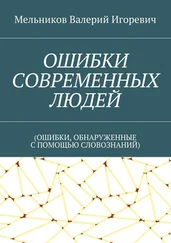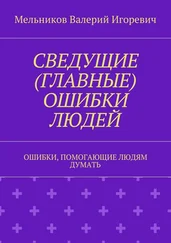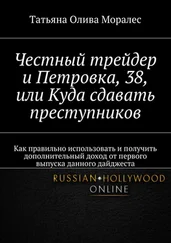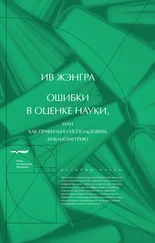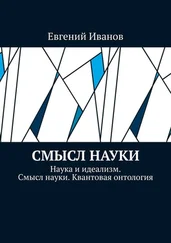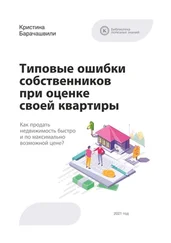Вернуться
75
См.: Loet Leydesdorff, “Theories of citation?”, in Scientometrics , 43, 1998, pp. 5–25.
Вернуться
76
См.: Blaise Cronin, The Citation Process. The Role and Significance of Citations in Scientific Communication , Londres, Taylor Graham, 1984.
Вернуться
77
См.: G. Nigel Gilbert, “Referencing as persuasion,” in Social Studies of Science , 7, 1977, pp. 113–122.
Вернуться
78
См.: Joseph Bensman, “The aesthetics and politics of footnoting,” in Politics, Culture and Society , 1, 1988, pp. 443–470; в этом длинном эссе нет ни одной ссылки или конкретных данных, а лишь пространная спекуляция на тему прогрессирующей самореферентности и стратегий цитирования.
Вернуться
79
См.: Vincent Larivière, Alesia Zuccala, Éric Archambault, “The declining scientific impact of theses: implications for electronic thesis and dissertation repositories and graduate studies,” in Scientometrics , 74, 2008, pp. 109–121; см. также: Matthew L. Wallace, Vincent Larivière, Yves Gingras, “A small world of citations? The influence of collaboration networks on citation practices,” in PlosOne , 7, 2012, e33339.doi:10.1371/journal.pone.0033339.
Вернуться
80
См.: Susan Bonzi, H. W. Snyder, “Motivations for citation: A comparison of self citations and citations to others,” in Scientometrics , 21, 1991, pp. 245–254; см. также: Béatrice Millard, “Les citations scientifiques: des réseaux de références dans des univers de références. L’exemple d’articles de chimie,” in REDES, Revista hispana para el análisis de redes sociales , 19, 2010, pp. 69–93.
Вернуться
81
См.: ESF [Европейский научный фонд], ESF Survey Analysis Report on Peer Review Practices , ESF, March 2011; www.esf.org/fileadmin/Public_documents/Publications/pr_guide_survey.pdf.
Вернуться
82
Marie Boas Hall, Henry Oldenburg. Shaping the Royal Society (Oxford: Oxford University Press, 2002), p. 84. Первым научным журналом действительно был Journal des savants , издававшийся Дени де Салло с января 1665 года. Однако три месяца спустя его выпуск был запрещен. Потом он был возобновлен, однако его содержание стало весьма разнородным и касалось всех видов деятельности «литературной республики». Это была скорее литературная газета, нежели реферируемый научный журнал в современном смысле.
Вернуться
83
Idem, ibidem , pp. 167–169.
Вернуться
84
См.: Y. Gingras, Sociologie des sciences, op. cit ., pp. 48–51.
Вернуться
85
См.: Lewis Pyenson, “Physical sense in relativity: Max Planck edits the Annalen der Physik , 1906–1918,” in Annalen der Physik , 17, 2008, pp. 176–189.
Вернуться
86
См. подробнее эту историю в: Daniel Kennefick, “Einstein versus the Physical Review ,” in Physics Today , 58, September 2005, pp. 43–48.
Вернуться
87
См.: Y. Gingras, Les Origines de la recherche scientifique au Canada (Montréal: Boréal, 1991).
Вернуться
88
См.: James M. England, A patron for pure science: the National Science Foundation’s formative years, 1945–57 (Washington D. C., NSF, 1982).
Вернуться
89
Stephen Cole, Jonathan R. Cole, Gary A. Simon, “Chance and consensus in peer review,” in Science , 214, 1981, pp. 881–886.
Вернуться
90
См. подробное исследование критериев оценки в: Michèle Lamont, How professors think. Inside the curious world of academic judgment (Cambridge, MA: Harvard University Press, 2009).
Вернуться
91
См.: Thane Gustafson, “The controversy over peer review,” in Science , 190, 12 December 1975, pp. 1060–1066.
Вернуться
92
См.: R. N. Kostoff, “Performance measures for government-sponsored research: overview and background,” in Scientometrics , 36 (3), 1996, pp. 281–292; см. также: Fabien Jobard, “Combien publient les politistes. La productivité des politistes du CNRS et leurs supports de publication,” in Revue française de science politique , 60, 2010, pp. 117–133.
Вернуться
93
См. анализ суждений по поводу найма профессоров в: Christine Musselin, Le Marché des universitaires (Paris: Presses de Sciences Po, 2006).
Вернуться
94
См.: Eugene Garfield, “Citation indexes in sociological and historical research,” in American Documentation , 14 (4), 1963, pp. 289–291.
Вернуться
95
Eugene Garfield, “Citation indexing for studying science,” in Nature , 227, 15 August 1970, pp. 669–671.
Вернуться
96
См.: Yves Gingras, Matthew L. Wallace, “Why it has become more difficult to predict Nobel prize winners: a bibliometric analysis of nominees and winners of the chemistry and physics prizes (1901–2007),” in Scientometrics , 82, 2010, pp. 401–412.
Вернуться
97
Eugene Garfield, “Citation indexing for studying science,” in op. cit. , p. 671.
Вернуться
98
См.: Janet B. Bavelas, “The social psychology of citations,” in Canadian Psychological Review , 19 (2), 1978, pp. 158–163.
Вернуться
99
См.: Theodore M. Porter, Trust in Numbers. The Pursuit of Objectivity in Science and Public Life (Princeton: Princeton University Press, 1996).
Вернуться
100
См.: Nicholas Wade, “Citation analysis: a new tool for science administrators,” in Science , 188, 2 May 1975, pp. 429–432.
Вернуться
101
См.: Jorge E. Hirsch, “An index to quantify an individual’s scientific research output,” Proceedings of the National Academy of Sciences , 102, 2005, pp. 16569–16572.
Вернуться
102
См.: Thed N. van Leeuwen, “Testing the validity of the Hirsch-index for research assessment purposes,” in Research Evaluation , 17, 2008, pp. 157–160.
Вернуться
103
Ludo Waltman, Nees Jan van Eck, “The inconsistency of the h-index,” 2011, in ArXiv:1108.3901v1.
Вернуться
104
Индексу Хирша был посвящен в недавнем прошлом вал наукометрических публикаций, однако авторы некоторых из этих статей, по всей видимости, мало озабочены вопросом, имеет ли индекс какой-либо смысл, и довольствуются его применением без критической рефлексии. См. анализ этой серии публикаций в: Ronald Rousseau, Carlos García-orita and Elias Sanz-Casado, “The h-bubble,” in Journal of Informetrics , 7 (2), 2013, pp. 294–300.
Читать дальше
![Ив Жангра Ошибки в оценке науки, или как правильно использовать библиометрию [калибрятина] обложка книги](/books/390964/iv-zhangra-oshibki-v-ocenke-nauki-ili-kak-pravilno-cover.webp)



